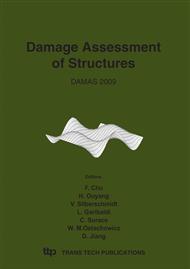p.505
p.513
p.521
p.531
p.539
p.547
p.553
p.561
p.569
A Steam Turbine Fault Diagnostic System Based on the Web and Database Technologies
Abstract:
The steam turbine is the principal mover in the field of electric power generation. It is very important and necessary to monitor and evaluate the running conditions and diagnose the faults of the steam turbine for the safe and normal running of the electric power plant. Fault diagnosis of the steam turbine is a complicated process and requires high level of the expertise. In order to significantly reduce the cost consumed in the fault diagnosis, increase the consistency of diagnosing decision-making, and better utilize the turbine’s management information resource, in this paper, an integrated Web-based expert system of the fault diagnosis for general purpose has been developed for the steam turbine of a power station. Moreover, it can be regarded as an advisory tool to those field engineers having much technical experience and as a training tool to less-experienced personnel who need guidance and advice. This paper describes a research project aiming to develop a web-based intelligent diagnostic system for the steam turbine, and discusses the process of the fault diagnosis and the issues involved in developing the system. The paper also includes several practical issues related to the architectures of the intelligent web-based applications. The system is built on a three-tier architecture, including the following components: knowledge base, inference engine, knowledge administration interface, user interface, knowledge administration, and integrated database. The diagnostic system employs heuristic rules to diagnose the steam turbine faults.
Info:
Periodical:
Pages:
539-546
Citation:
Online since:
June 2009
Authors:
Keywords:
Price:
Сopyright:
© 2009 Trans Tech Publications Ltd. All Rights Reserved
Share:
Citation:


